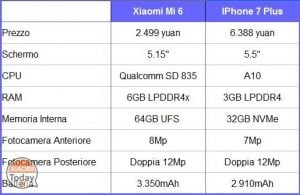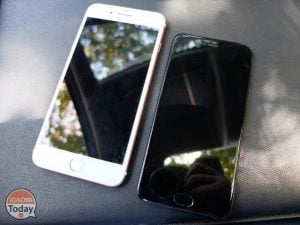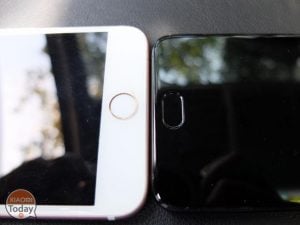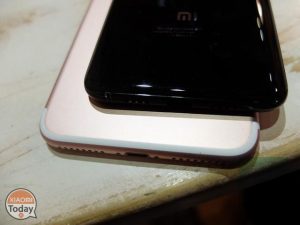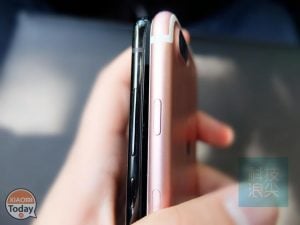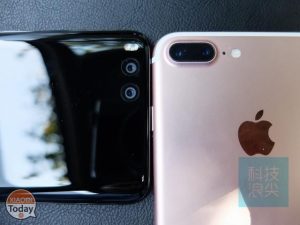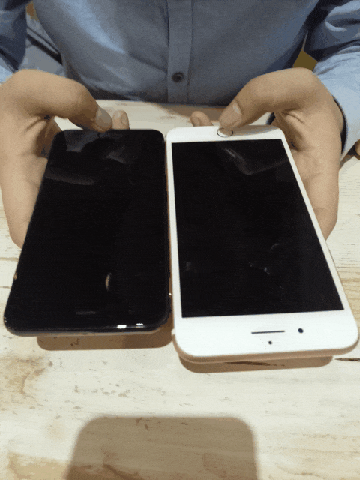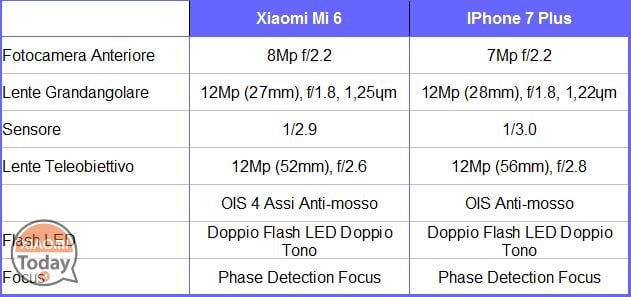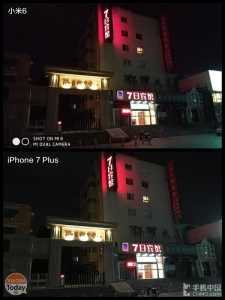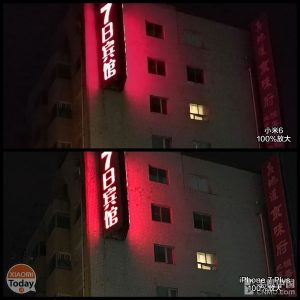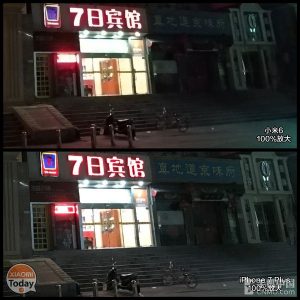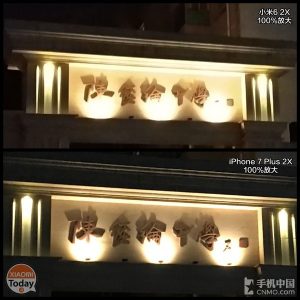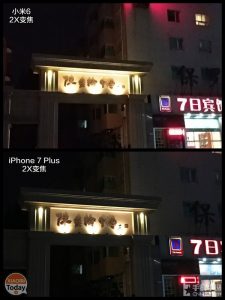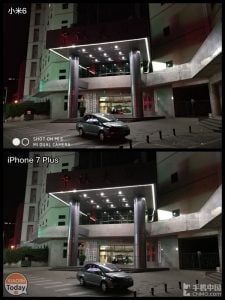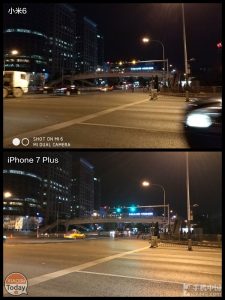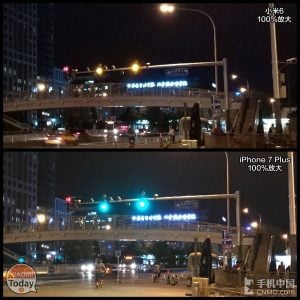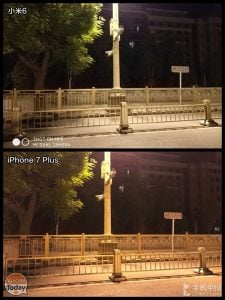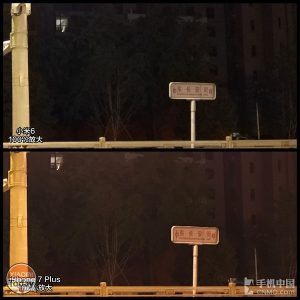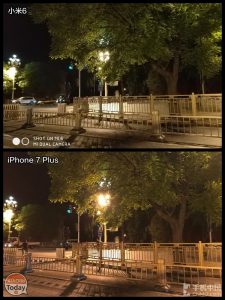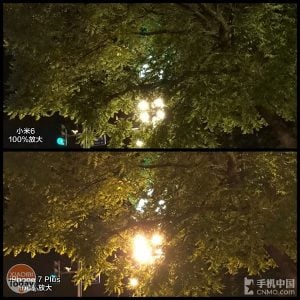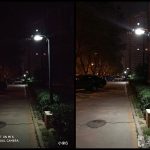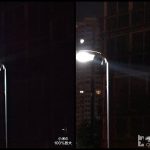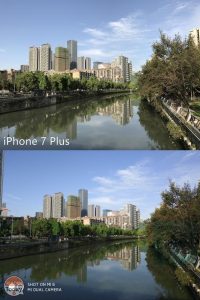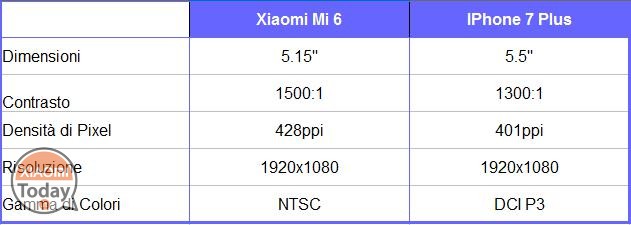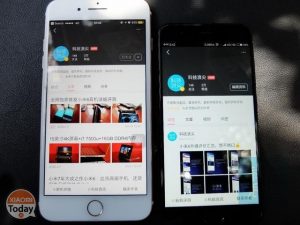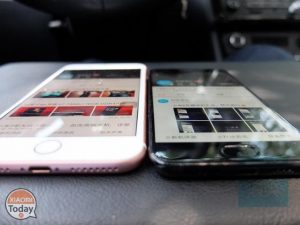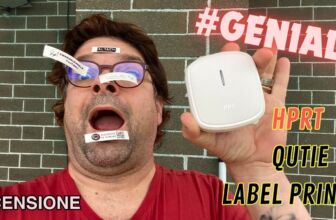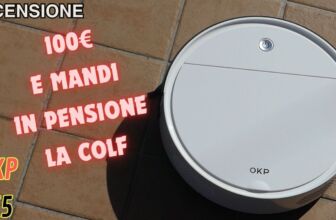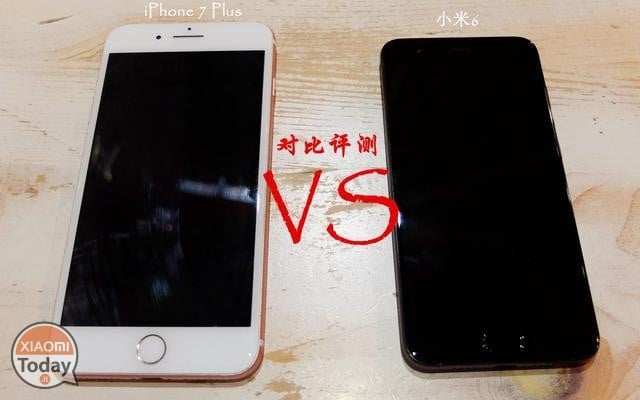
It has not yet been officially advertised Xiaomi Mi 6 is already one of the most popular smartphones in the last few months. To understand at least some of its potential, here is the small review offered by a Chinese mobile technology site that compares the Xiaomi Mi 6 and the iPhone 7 Plus.
Appearance
The Xiaomi Mi 6 has a thickness of 7,45mm, a weight of 168gr, while the iPhone 7 Plus is often 7,3mm and weighs 188gr. The iPhone is less often, but due to the special machining of the Xiaomi back, with the four curvature of the edges, the latter seems slimmer and certainly much more manageable.
Both smartphones use a non-porous fingerprint sensor.
As you can see from the images, the two cameras of the iPhone protrude, which makes them more subject to scratches and dirt, while those of the Xiaomi Mi 6 do not.
Speed sensor for fingerprints
In general, both terminals have a fingerprint sensor that is very fast, so that it is impossible to detect the difference between the two. But compared to Mi 6, the iPhone is a little slow in loading the desktop.
The dual camera
First of all, compared to its predecessors, the Xiaomi Mi 6 offers a highly competitive photographic department, both in terms of components and in terms of the software aspect that offers many shooting possibilities, even with aspects to improve on future updates.
As has been stated many times, both the iPhone and the Mi 6 are equipped with a dual camera with a wide-angle lens and a telephoto lens with sensors close to the magnitude of those in the digital compact commercials. Differentiating the two smartphones is the four-axis optical image stabilizer on the Xiaomi, which in theory should offer better shots.
As noted in another comparison we have proposed, this time with the Samsung Galaxy S8, 2x optical zoom offers a satisfying performance only in good brightness conditions.
Looking at these photos taken at night, both terminals give very similar results, but if we go zooming in the images, we notice that the Xiaomi Mi 6 loses many details and resolution, as well as being unable to capture more light than the iPhone.
Xiaomi's focus seems to lose speed when using 2x optical zoom and the shot is more likely to be moved. By zooming the usual we see that the Mi 6 seems to lose light but the image is always relatively clean.
In other shots the iPhone tends to be less accurate and slightly overexposing the photos.
Even in this situation, the Xiaomi Mi 6 makes precision in detail and better color reproduction, with the iPhone distorting the image with a violet nuance.
The same thing applies to this group of photos: the Mi 6 is able to give you a feeling of a cleaner picture and close to reality, even if magnifying the image you notice that the iPhone can play more detail.
This last group of photos instead confirms how much the Mi 6 loses in brightness compared to the iPhone 7 Plus.
Summing up, Xiaomi Mi 6's performance at a normal nightly rate exceeds that of its predecessors, and in general is more than good, although we hope that Xiaomi will continue to optimize the algorithm with future updates that then cover those small gaps highlighted.
Looking at daytime shots, the images made by the Xiaomi are brighter, pleasing and detailed than those given by the iPhone, though perhaps slightly lighter.
In these photos taken internally, the iPhone 7 Plus tends to underdrive while the Mi 6 seems to overexpose slightly.
In this set of shots, we see how enlarging the image, Mi 6 gives more details than the iPhone.
Screen
As for the screens, both smartphones have special features: the iPhone 7 Plus uses the DCI P3 range that goes beyond the sRGB 100% and is largely used in the film industry. The Xiaomi Mi 6 screen, on the other hand, has been certified to reduce the blue light emission to protect the eyes even during night time.
Both terminals use an IPS LCD panel with good viewing angles.
Processor
The 7 Plus iPhone chip is a quad-core A10 Fusion with a 16nm production process: the core is divided into two broader, high performance core and two smaller and less powerful core. As for the Mi 6, it is equipped with an octa-core processor Snapdragon 835 based on the latest 10nm process technology and supports the latest type of RAM, the four-channel LPDDR4X.
The tests performed show that the Xiaomi Mi 6 is able to keep an eye on the performance of the 7 Plus iPhone: while in tests Antutu the two scores are very similar, the results on Geekbench 4 give the iPhone the winner in the single-core tests and the Mi 6 in the multi-core test.
Conclusions
A decisive factor in favor of the Xiaomi Mi 6 is certainly the price: just look at the simple first diagram at the beginning of the article to realize that the iPhone costs about triple the Mi 6, again if we compare the 128GB version, available for both mobile phones.
It's hard to find a really significant defect in this new Mi 6: just think of the recently released dual-processor, the dual camera that is able to handle the comparison with that of the smartphone of Apple and Samsung. In short, all this at a very competitive price compared to rivals. It can also be said that the Apple ecosystem is unique, but MIUI is also, and is always quite attentive to its users.
And what do you think?

